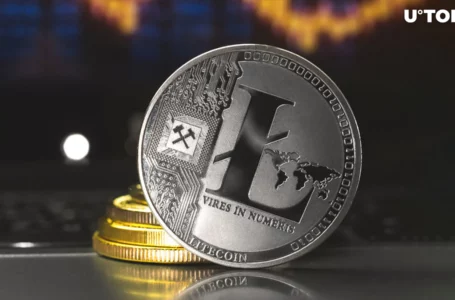
The Human Genome Project started in 1990. By 2003, with 92% of the genome sequenced, the project was declared complete. This year tech advances have finished the other 8%. Blockchain tech like NFTs can use the information from this marvelous project to build new, better biotech products for humanity.
The achievements of human DNA research were published Thursday in the journal Science. The UC Santa Cruz-based Telomere-to-Telomere (T2T) Consortium, an open community effort with a team of nearly 100 scientists, has announced that it is ready to showcase the complete human genome for the first time ever. ‘story.
The Connection Between Medial Researchers, Blockchain, DNA
The open, peer-reviewed, project-focused, humanitarian community of scientists has an ethos that many in the NFT industry and broader cryptocurrency community would find very familiar with their own motivating principles and modes of collaboration.
The roadblock the researchers encountered in 2003 was that they had completed the sequencing of euchromatic DNA which is lightly packed and constantly in transcription. Because of this, it was easier to sequence using the latest methods.
The remaining 8% is heterochromatic, tightly packed, and less accessible to transcription. It’s like a cryptocurrency proof of work hashing problem with a higher difficulty calibration during times of increased hash power on the entire, say, Dogecoin network.
Now that scientists can read what’s going on in heterochromatic human DNA, they’ve discovered that it’s very important to human health and evolution. CNN’s Tasnim Ahmed reported on Thursday that Evan Eichler, the head of the T2T project, said:
It turns out that these genes are incredibly important for adaptation. They contain immune response genes that help us to adapt and survive infections and plagues and viruses. They contain genes that are … very important in terms of predicting drug response.”
Using the fully sequenced human genome, blockchain technology like smart contracts and non-fungible tokens (NFTs) can help propel the next wave of biotech innovation to create real solutions to support human health and extend human life.
Biotech Medicine Firms, Blockchain, NFTs
The cryptocurrency industry’s fast-growing and extensive toolkit of powerful capabilities can aid in getting more genomic data into researchers’ hands while protecting genomic data privacy. Namely, these are storing, tracking, and securing information for clinical trials; and fast-track development of vital tools and therapies by creating financial incentives for networks to lend computational power to research efforts.
And Alfred C. Chin of Blockchain for Science says blockchain can do a lot more for biotech and medicine. Due to its rigorous and computationally efficient means of record keeping, blockchain can be used to trace the lineage and mutations of cancer cells:
“A cryptographic hash function can map a single-cell omics signature to a dimension-reduced fingerprint of the cancer. Such processing is realistic given the substantial progress made in computational methods for multimodal integration of single-cell omics data.”
Blockchain’s relevance to biotech medicine isn’t just a theoretical hope in the 2020s. Last year, Patrick Yopp of Corzant Technologies wrote a profile on Louisville, Kentucky-based InvicTech, LLC, a leader in biomanufacturing, and how the biotech company is pioneering the use of blockchain technology to simplify, secure and scale lab operations. He even found a way to turn his state-of-the-art downloadable microfluidic chips into NFTs.
Given the rate of cryptocurrency’s advancement, it’s not the technology holding up the deployment of these peer-to-peer databases for medical applications, says Technology Networks’ Rakesh Joshi. He cites a report by innovation consulting firm PreScouter, authored by the company’s Technical Director for the healthcare and life sciences, Dr. Charles Wright:
“The consensus view is that changing the mindset of private, public and political leaders to embrace blockchain technology and the required management change is the biggest barrier to blockchain deployment.”
If true, that means it’s not the technology that’s lagging; it’s the knowledge, understanding, imagination, and belief of the leaders interested in unlocking nature’s secrets for the benefit of human health.


















